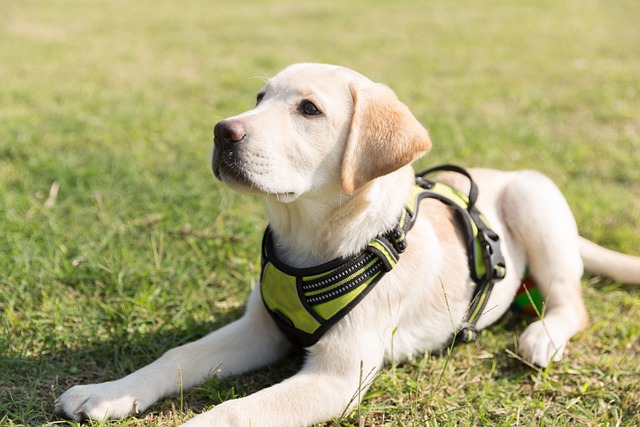
How can I tell if my dog's heatstroke is serious
Let’s be real: It’s a sticky August morning in Los Angeles, and you took your 2-year-old Golden Retriever, Max, for a walk a little later than usual
When we decide to take our dogs for sterilization, our hearts are filled with expectations for their future health and happiness. Sterilization surgery can not only help dogs prevent some serious reproductive system diseases, but may also improve their behavioral performance to some extent. However, every owner carries a common question: how long does it take for a dog's behavior to change after sterilization?
The recovery period after dog sterilization is the first stage of behavioral change. Generally speaking, dogs need about a week to recover from surgical trauma, but this time may vary depending on the dog's physical condition and the specific circumstances of the surgery. During this period, dogs' bodies are in a relatively fragile state and they may exhibit some postoperative discomfort symptoms. For example, some dogs may experience drowsiness, loss of appetite, low mood, avoidance of their owners, or disinterest in their surroundings due to the pain of surgical wounds. This is caused by the stress response and sudden changes in hormone levels brought about by surgery. Just as a person needs some time to recuperate and recover from a disease or surgery, dogs also require careful care and attention from their owners during this stage.
During the recovery period, the owner should pay special attention to the care of the dog's wounds. It is crucial to keep the wound dry and clean, and to avoid dogs licking the wound to prevent infection. You can wear an Elizabeth ring on your dog and regularly check for any abnormal conditions such as redness, swelling, or exudation in the wound. At the same time, it is important to provide dogs with a quiet and comfortable resting environment, avoiding vigorous exercise to prevent wound tearing. In terms of diet, do not feed or water dogs until they are fully awake after anesthesia to prevent vomiting or coughing. After anesthesia and awakening, a small amount of dog food can be fed first, and the dog can resume normal eating after its first bowel movement.
After the recovery period, the hormone levels in the dog's body gradually undergo more significant changes, which is also the period when behavioral changes begin to manifest. But the specific time point varies greatly depending on the individual differences of the dog, usually taking several weeks to several months for the dog's behavior to gradually stabilize.

Generally speaking, many dogs undergo positive changes in certain behaviors after sterilization. For example, after sterilization, the behavior of marking territory in male dogs often gradually decreases. Under normal circumstances, male dogs mark their territory and declare sovereignty by urinating everywhere, but after sterilization, this marking behavior usually significantly decreases or even disappears within weeks to months as male hormone levels decrease. However, it should be noted that marking territory is not only a hormone driven behavior, but also related to the dog's habits. Even if hormone levels decrease, some dogs may still continue to mark their territory out of habit. At this point, it is necessary for the owner to patiently train and correct the behavior to help the dog adapt to the new behavior pattern more quickly.
In addition to behavioral changes related to reproduction, some daily behavioral habits of dogs may also change after sterilization. For example, some dogs become quieter and gentler after sterilization, and their dependence on their owners increases. They are no longer as energetic as before, preferring to vent their energy by biting things and dismantling homes, but rather prefer to stay quietly by their master's side and enjoy intimate time with them. This is because sterilization surgery stabilizes the hormone levels in dogs, reducing emotional instability and hyperactivity caused by hormonal fluctuations. However, there are also some dogs that, due to their lively and cheerful personalities, may not show significant changes in behavior after sterilization and still maintain their vigorous energy and lively nature.
Every dog is a unique individual, and their reactions to sterilization surgery vary. Some dogs may experience significant changes in behavior within a few weeks after sterilization; Some dogs may take several months or even longer for their behavior to gradually stabilize. The impact of sterilization surgery on dog behavior cannot be measured solely by time, but also requires comprehensive consideration of various factors such as the dog's age, personality, breed, and preoperative behavioral habits.
The time it takes for a dog's behavior to change after sterilization is a complex question, and there is no definite answer. As owners, we need to provide our dogs with sufficient patience, care, and attentive attention after sterilization. Closely observe the behavior changes of dogs, adjust their diet and lifestyle habits in a timely manner, and help them smoothly get through this special period. Because dogs provide us with unconditional loyalty and companionship, we should also do our best to create a healthier and happier living environment for them, so that this precious friendship between humans and pets can shine brighter in the long river of time.

Let’s be real: It’s a sticky August morning in Los Angeles, and you took your 2-year-old Golden Retriever, Max, for a walk a little later than usual

You're enjoying a summer afternoon at the park when you notice your dog has stopped panting and appears disoriented - their gums are bright red

Let’s paint the picture: You’re in your Denver apartment, watching your 4-year-old Boston Terrier, Ruby, plop down mid-play session with her favorite toy

Many dog owners notice their pets nails seem shorter after regular walks,but how much does this daily activity actually help?The answer depends on where you walk—concrete sidewalks or asphalt streets gently file nails as a dog's paws hit the ground

Most dog owners notice their pup scooting across the carpet at some point, but few connect it to impacted anal glands. These small sacs near a dog’s rectum secrete a scent for marking territory

Most vets agree that regular dog teeth cleaning is key to avoiding painful dental issues later. For healthy adult dogs, a professional cleaning at the vet’s office every 12 to 18 months usually works well.